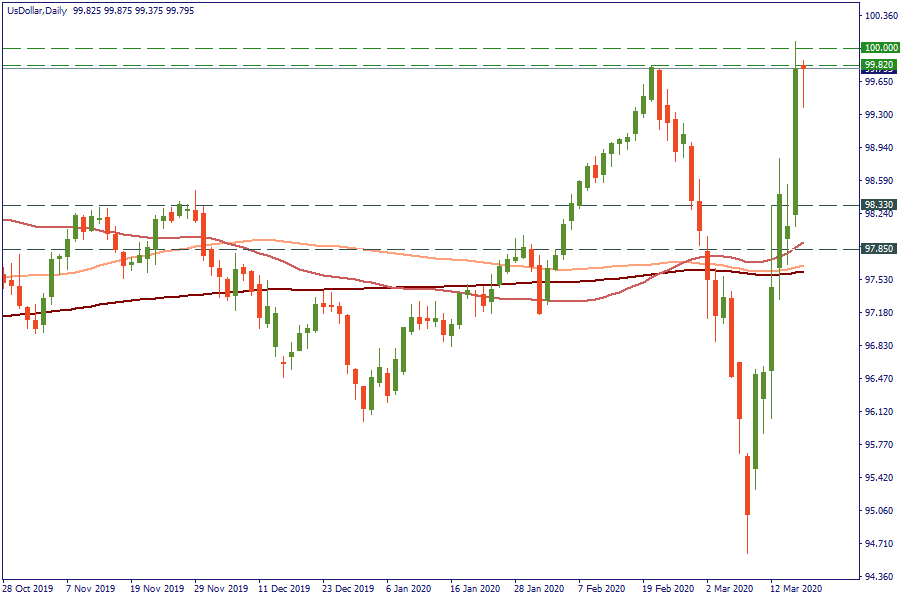USD: strongest in three years?
On Monday, the Federal Reserve implemented unexpected stimulus measures in order to support the US economy amid the pandemic of a new coronavirus. The Fed cut the interest rate by 1% pulling it within the range of 0-0.25%. Among other tools introduced by the regulator, there were buying $700 billion worth of Treasury bonds and mortgage-backed securities. The last but not least, it cut a so-called discount rate – short-term loans available to the banks through the discount window. Despite these significant steps towards economic stability, the initial reaction of the stock market was negative. S&P plunged to the support zone at $2,360.
The USD, on contrary, continued its bullish performance despite the stimulus, ruining the traditional market behavior. Yesterday, the US dollar index retested the resistance at 99.82 (a high of February 20).

What are the reasons?
Analysts name several reasons for this market behavior. The first one, of course, is the shock wave. As the Federal Open Market Committee was planning its meeting on Wednesday, a surprising announcement right before the opening of the Asian trading session stressed the volatile markets even more. While the bank was trying to present the information as softer as possible, the market interpreted this as the late actions by the Fed.
The second is the fear that no more monetary tools left, as the Federal Reserve already showed all tricks up its sleeve. “What about the negative interest rates?” – you will say. In theory, they are possible. But the Fed Chair Jerome Powell has denied multiple times that they are necessary at the moment. The same goes to the purchases of corporate stocks and bonds.
The third reason analysts believe is the unnecessary buying of Treasuries and mortgages. Compared to 2008, there is no instability in the mortgage market. Instead, we should pay attention to corporations, which are unable to generate enough capital to service their balance sheets. Thus, providing loans to the businesses directly (helicopter money) would be more appropriate in that situation.
Finally, it was historically proven that monetary policy stimulus is not suitable to deal with a supply shock. As consumers stay at their homes, lower mortgage rates won’t stimulate to buy homes.
What should we expect next?
Despite the easing, the demand for the safe-haven USD continues rising. According to many analysts, investors will still prefer the US dollar and won’t choose to put their money overseas, while the global sentiment is unstable. The Fed changes to the monetary policy may have an effect on the USD, but only in the longer-term. As the pandemic spreads and the recession is knocking, we may likely see the USD keeps strengthening against other currencies.